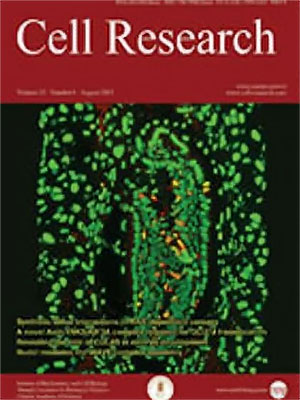
Volume 11, No 3, Sep 2001
ISSN: 1001-0602
EISSN: 1748-7838 2018
impact factor 17.848*
(Clarivate Analytics, 2019)
Volume 11 Issue 3, September 2001: 209-216
ORIGINAL ARTICLES
Cloning and characterization of a novel gene (C17orf25) from the deletion region on chromosome 17p13.3 in hepatocelular carcinoma*
QIN Wen Xin1, Da Fang WAN1, Fen Yong SUN1, Ping Ping ZHANG1, Li Wei HAN1, Yi HUANG1, Hui Qiu JIANG1, Xin Tai ZHAO1, Mei HE2, Yun YE2, Wen Ming CONG3, Meng Chao WU3, Li Sheng ZHANG4, Nan Wu YANG4, Jian Ren GU1,**
1National Laboratory for Oncogenes and Related Genes, Shanghai Cancer Institute, 25/Ln 2200 Xie Tu Road, Shanghai 200032, China
2Shanghai GeneCore Biotechnologies, 200 Tian Lin Road, Shanghai 200233, China
3Eastern Hepatobiliary Surgery Hospital, Second Military Medical University, 225 Changhai Road, Shanghai 200433, China
4Cancer Hospital, Guangxi Medical University, Nanning 500021, China
Correspondence:
Using a combination of hybridization of PAC to a cDNA library and RACE technique, we isolated a novel cDNA, designated as C17orf25 (Chromosome 17 open reading frame 25, previously named it HC71A), from the deletion region on chromosome 17p13.3. The cDNA encodes a protein of 313 amino acids with a calculated molecular mass of 34.8 kDa. C17orf25 is divided into 10 exons and 9 introns, spanning 23 kb of genomic DNA. Northern blot analysis showed that the mRNA expression of C17orf25 was decreased in hepatocellular carcinoma samples as compared to adjacent noncancerous liver tissues from the same patients. The transfection of C17orf25 into the hepatocellular carcinoma cell SMMC7721 and overexpression could inhibit the cell growth. The above results indicate that C17orf25 is a novel human gene, and the cloning and preliminary characterization of C17orf25 is a prerequisite for further functional analysis of this novel gene in human hepatocellular carcinoma.
FULL TEXT | PDF
Browse 2721


